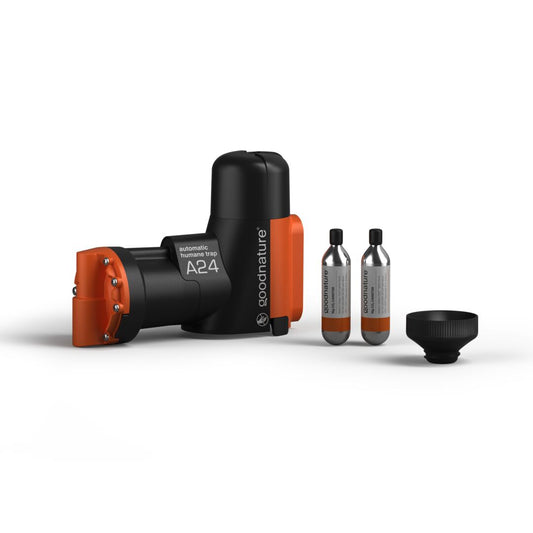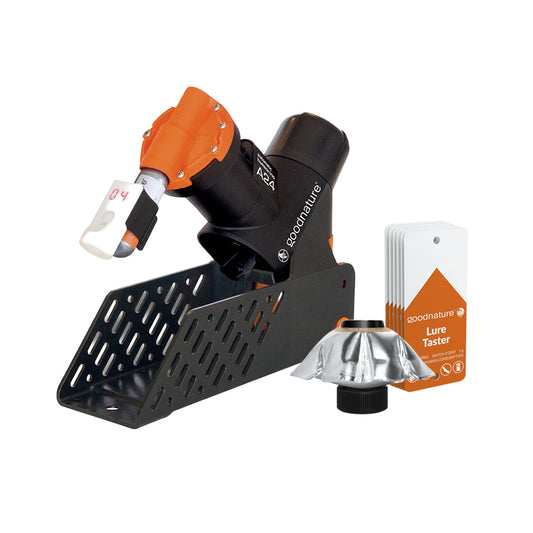
Rats have a well-deserved reputation as disease carriers. In fact, rodents have been spreading diseases for most of human history. Rats were even one of the main causes of the Bubonic plague. This particular incident would take the lives of around 200 million people during a seven-year period in the 14th century. For context, this entailed somewhere between 30% to 60% of Europe's population dying over those seven years, and of course, this is only one example of rats and mice spreading disease among humans.
With the stark example of the bubonic plague it's natural to have some concerns about the impact of modern day carriers. At the moment, typhus is one of the most common examples of rat borne disease. But how exactly do rats transmit typhus to humans? And is there any way to protect ourselves from this threat?

A Single Disease Spread Among Many Species
Pet owners might note one strange thing about the phenomenon of rat-borne illness. Nobody catches the flu or the common cold from their pets. Humans don't have anything to fear when taking care of a cat or dog that's come down with a drippy nose or light fever. The only reason to quarantine pets is if other members of the species are living in the same household.
A dog can catch a cold from another dog. A cat might spread a contagious virus to other cats. But we don't see this kind of transmission happening between members of different species. The dog won't infect the cat. The cat won't infect the dog, and neither species will infect a human. So how are rats transmitting typhus to people? The answer can be found in fleas.
Fleas and Rats Are a Dangerous Duo
When you look at a rat you'll usually just think of it in singular terms, but it's important to keep in mind that rats often serve as a host to a wide variety of parasitic species. Some of them are a major annoyance to rats. Fleas are easily among the best examples. No mammal enjoys the feeling of fleas crawling around on them, and rats most certainly aren't an exception to that rule. However, it's really humans that are hurt by the fleas living on a rat's body. This is due to the fact that fleas can also serve as a host for pathogenic bacteria which have made a home inside a rat. This can create a chain of infection which leads right into a human's bloodstream.
Typhus is caused by rickettsia typhi bacteria that primarily live inside of a rat's bloodstream. However, when a flea drinks the rat's blood it also sucks up some of the rickettsia typhi. The bacteria can stay alive for some time within the flea. If the flea should happen to jump from a rat onto a human, then you see the chain coming into fruition. If the infected flea bites a human, then it will introduce the rickettsia typhi bacteria into the human's bloodstream. From there, the bacteria will start to reproduce and make themselves at home within the human host.
This might seem like an odd matryoshka doll of parasitic organisms. However, it's actually quite normal for rat diseases. Most diseases a human can catch from rats are actually flea-borne. The rat is more of an intermediary than the primary vector for the diseases. In fact, the rat plays so little active role in the transmission of many diseases that it can still pose a risk when it's dead. Just recently, a woman in California wound up infected after she found a dead rat in her backyard. As she disposed of the rat, the rodent's fleas found her to be a far more attractive host. The fleas jumping off the now deceased rat brought along the pathogenic bacteria as well.

The Journey From Host to Host
There is one bright side to this otherwise distressing situation. Notice that you seldom hear about diseases leaping from rat to human and then infecting an entire community of people. This is due to the fact that humans don't serve as a very good host for fleas. A flea will usually find itself tempted by humans. Anyone who's struggled with a cat or dog infested with fleas can attest to the fact that they love to bite humans as well, but fleas largely need a host with fur. Even someone with thick, flowing hair just doesn't provide enough for a flea to work with.
Unfortunately though, there is still one problem with additional species. A flea can carry typhus from a rat to a dog, cat, or other pet. And from here the pet can act as an active reservoir of the pathogenic bacteria. This is where things get a lot more complicated.
A Small Number of Hosts Can Turn Into Many Carriers
Imagine a mid-sized, single building, apartment complex. The people within it have a wide variety of different pets. Some of the cats go outside and wander about. All of the dogs get walked one or more times per day, and in general there's a lot of animals going out of and coming back into the complex. And now consider a situation where a few rats with typhus were lured in by the smell of food or the promise of warmth.
Even if the rats didn't get into the building they'd still pose a risk of infection to pets going outdoors. If fleas made their way onto a cat or dog, then the pet would become an all new vector. The problem would be compounded if the rats made their way into the building itself. The risk to a single household is lessened in comparison to an apartment complex. But the danger is similar, even if the speed of contagion is decreased. In all of these cases the fleas will leap from rat to pet, and once the fleas are on the pet they'll be able to infect humans.

How To Handle the Problem
Of course this all brings up an important question. How can you actually protect yourself from rat-borne diseases? The answer essentially comes down to removing any possible contact with fleas living on those rats. This begins through the use of a solid flea medication for cats, dogs and any other pets. This will eliminate one of the more common routes for a rat's fleas to make their way to humans.
Next, you should invest in a toxin-free trap that can instantly take care of rats. It's true that fleas can live for a considerable amount of time on a deceased host. Taking care of the rats as quickly as possible does a few important things.
First, it keeps the rats from reproducing. This limits the potential hosts for the fleas. Next, it limits the rat's mobility. Pest control methods that act in a slower manner give the rat more opportunities to infect you or your pets. Effective traps will ensure that doesn't happen. The final point is to make sure that you're properly covered up when disposing of the rodent. It's a good idea to wear gloves and long sleeved clothing when you're concerned about fleas.
It's also important to act as quickly as possible. Both rats and fleas can breed at a shockingly rapid pace, and the more of either species you're dealing with the more difficult it'll be to deal with them. By acting quickly, you're ensuring the situation doesn't have time to escalate.





